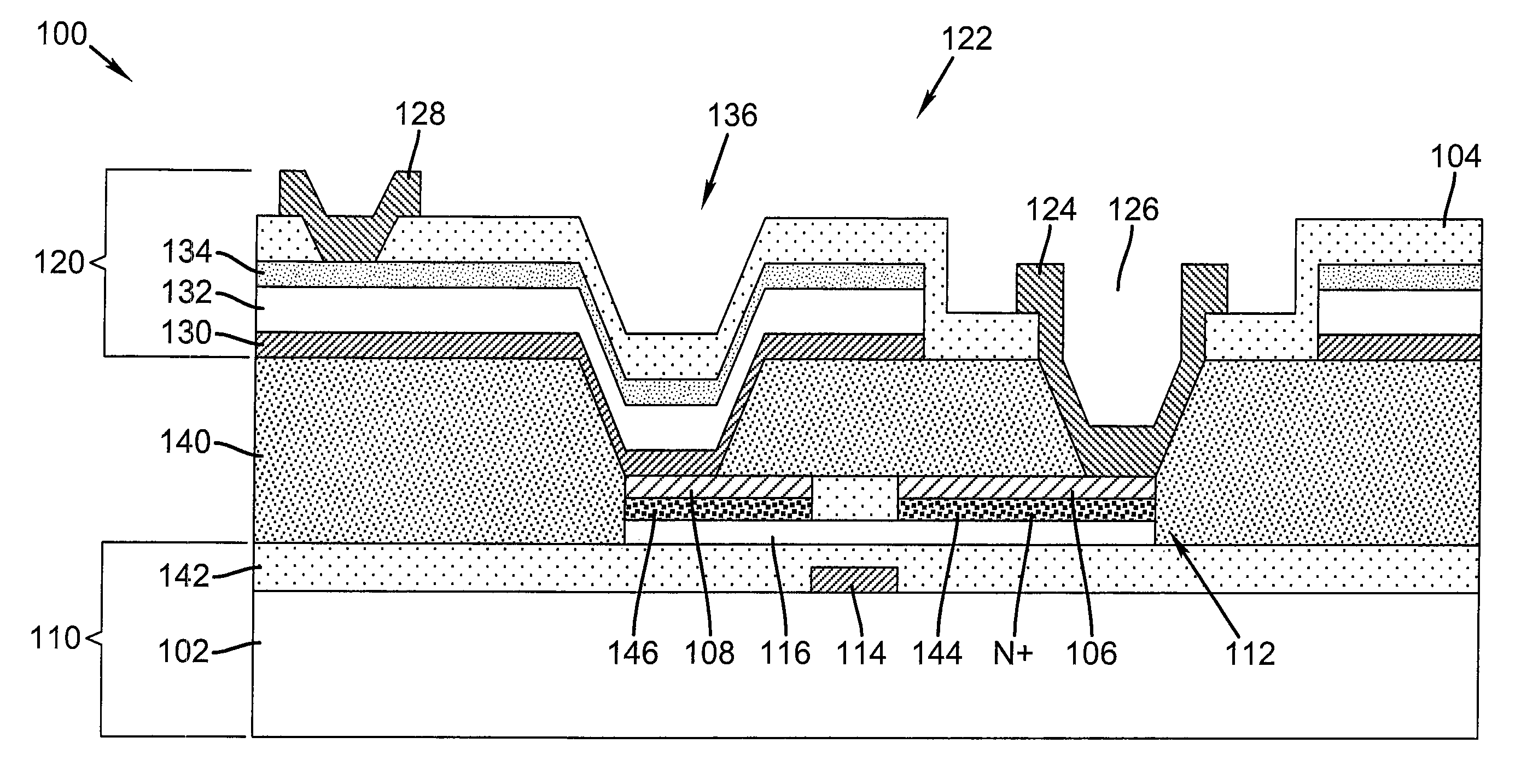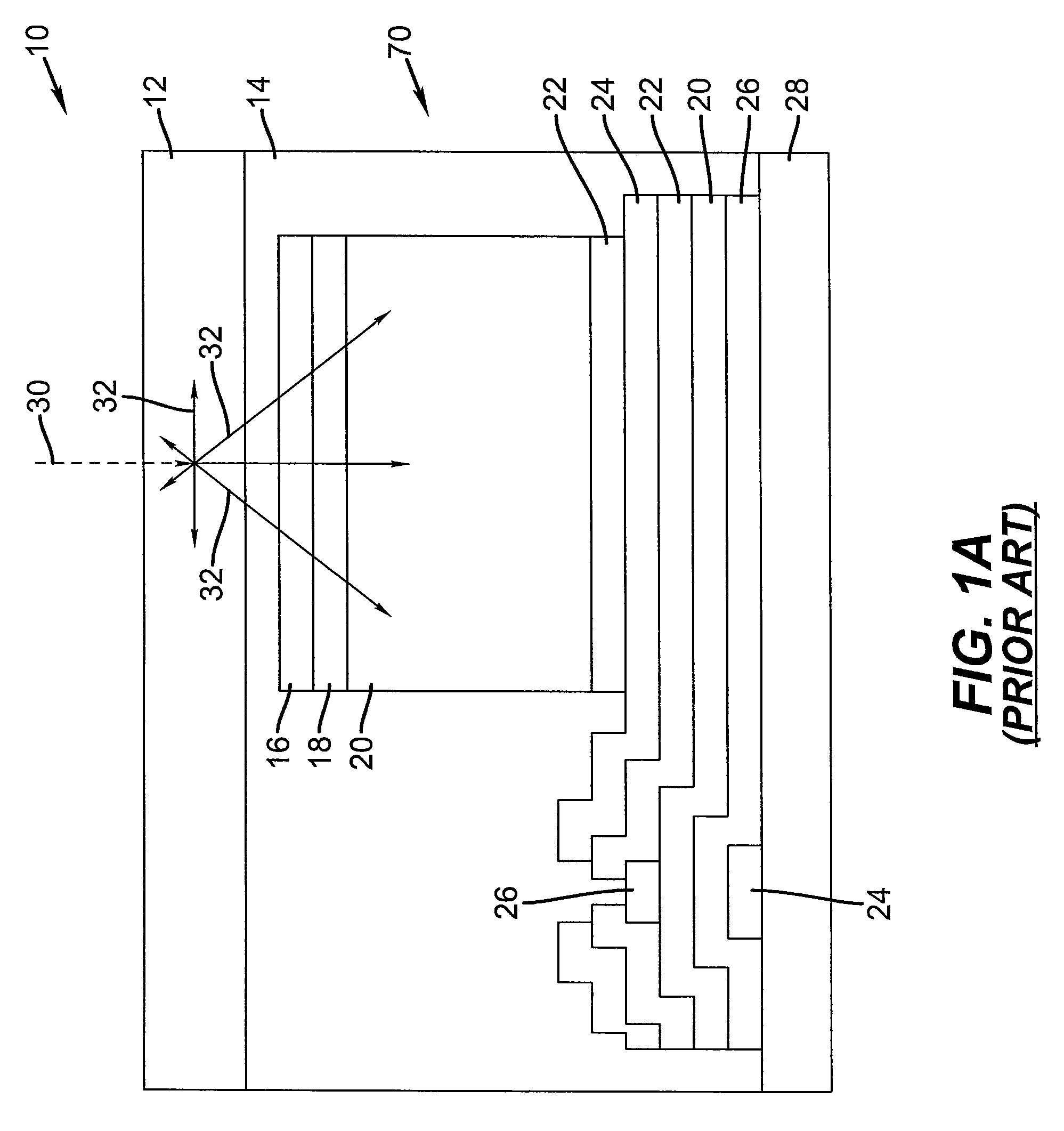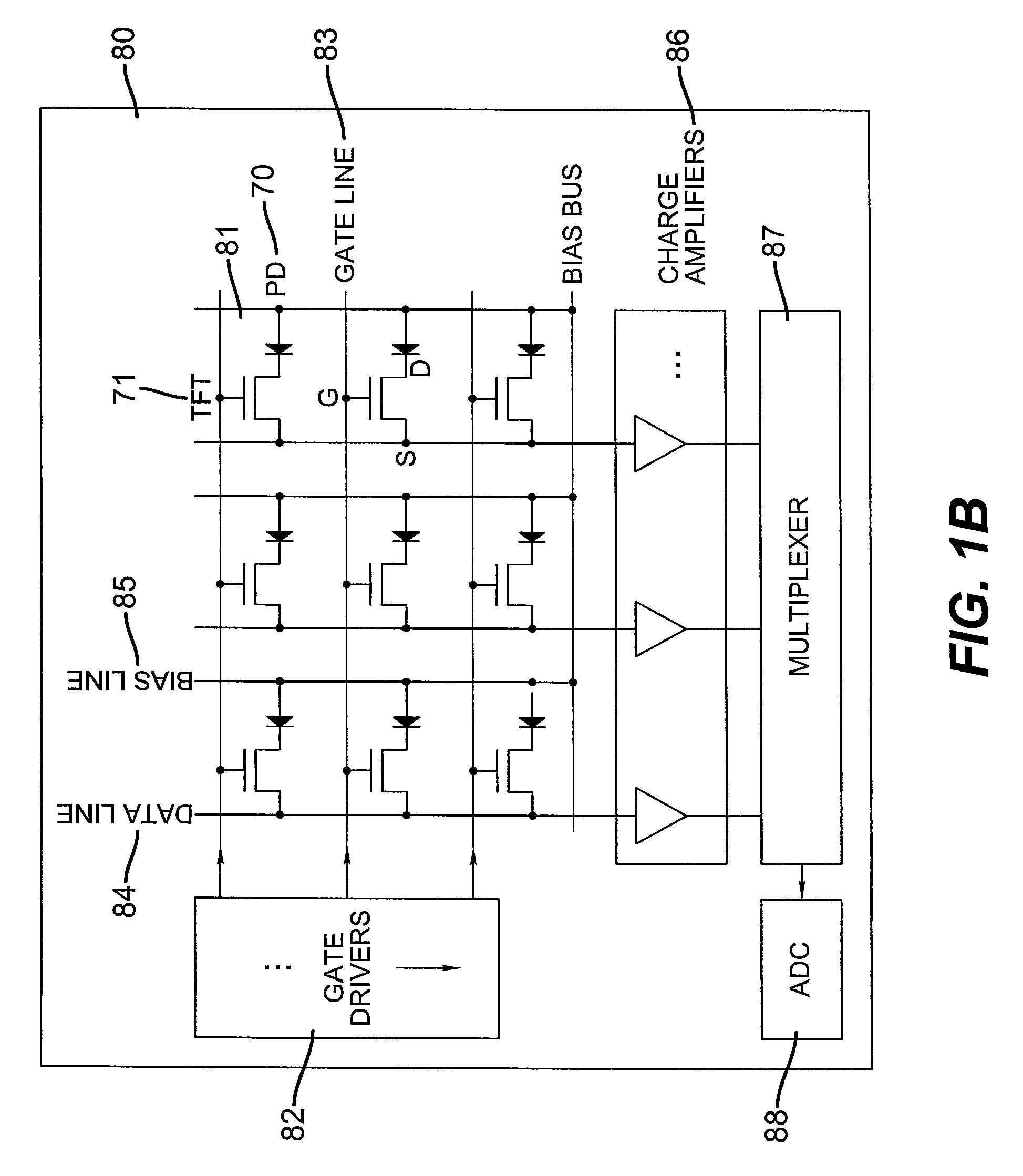High fill-factor sensor with reduced coupling
a sensor and high fill-factor technology, applied in the field of digital radiographic imaging, can solve the problems of increasing signal coupling between data and switching electrodes, relatively poor fill-factor of sensor devices, increasing thermal or “dark state” noise, etc., to achieve high fill-factor, reduce thermal noise and capacitive coupling, and improve data isolation
- Summary
- Abstract
- Description
- Claims
- Application Information
AI Technical Summary
Benefits of technology
Problems solved by technology
Method used
Image
Examples
Embodiment Construction
[0041]The present description is directed in particular to elements forming part of, or cooperating more directly with, apparatus in accordance with the invention. It is to be understood that elements not specifically shown or described may take various forms well known to those skilled in the art.
[0042]Referring to FIG. 2, there is shown a cross-sectional view of a pixel sensing circuit 100 according to an embodiment of the present invention. A substrate 102 on which circuit 100 is formed can be glass, plastic, or an inorganic film, polyimide, acrylic resin, benzocyclobutene (BCB), or the like or some other material, including stainless steel, for example, coated with a dielectric, such as BCB or spin-on glass. Electronic components and sensors are fabricated as part of a backplane 110 or a front plane 120. An insulating layer 140 separates backplane 110 from front plane 120. Insulating layer 140 can be, for example, benzocyclobutene (BCB), polyimide, sol-gel, acrylic, or some othe...
PUM
 Login to View More
Login to View More Abstract
Description
Claims
Application Information
 Login to View More
Login to View More - R&D
- Intellectual Property
- Life Sciences
- Materials
- Tech Scout
- Unparalleled Data Quality
- Higher Quality Content
- 60% Fewer Hallucinations
Browse by: Latest US Patents, China's latest patents, Technical Efficacy Thesaurus, Application Domain, Technology Topic, Popular Technical Reports.
© 2025 PatSnap. All rights reserved.Legal|Privacy policy|Modern Slavery Act Transparency Statement|Sitemap|About US| Contact US: help@patsnap.com



